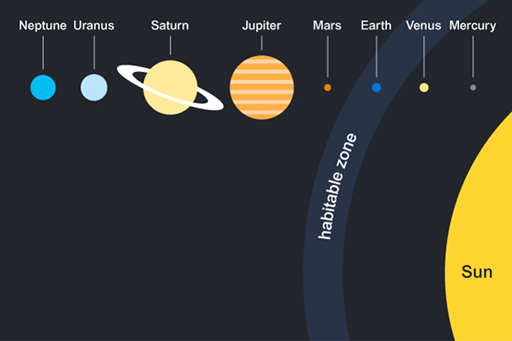2.5 The habitable zone
Since liquid water is essential to life as we know it, the surface temperature of the planet or moon really matters: it should be between 0 °C (the freezing point of water) and 100 °C (the boiling point of water).
The most important factor that determines temperature on a planet’s or moon’s surface is its distance from the Sun. If the planet or moon is too close, it gets too hot; if it is too far away, it is too cold. Currently, the only bodies inside the habitable zone of the Sun are the Earth and the Moon. But the Moon has a very hostile surface, with temperatures varying between +120 °C during the lunar day and −150 °C during the lunar night. The reason for these extremes is that the Moon is too small to hold an atmosphere, and so its sunlit side heats up quickly and its night side cools quickly.
Looking at Figure 11 suggests that there is little hope, from this point of view, of finding habitable environments elsewhere. However, the Earth–Moon comparison shows that being in the habitable zone is not the only determining factor.

